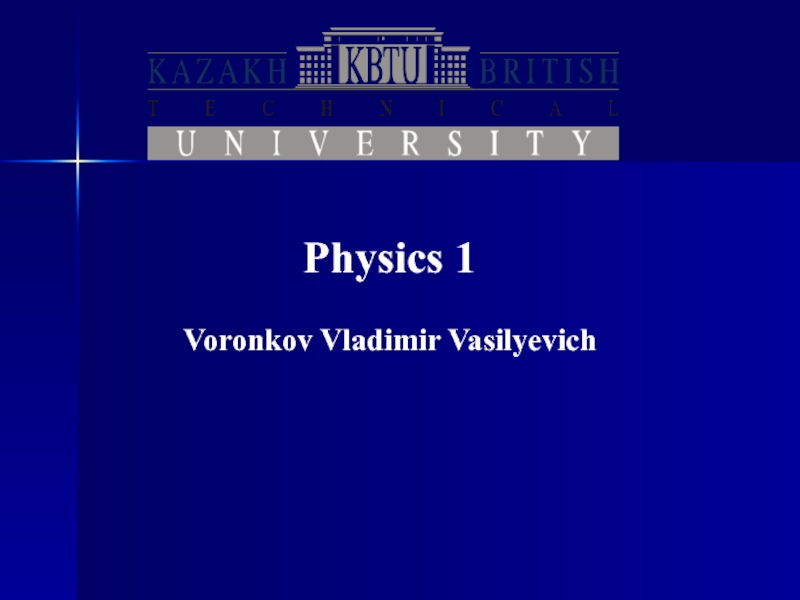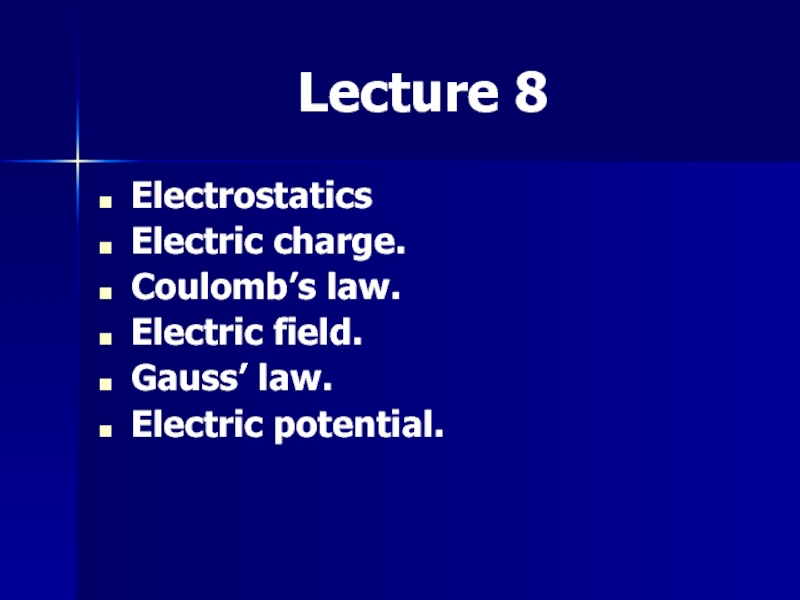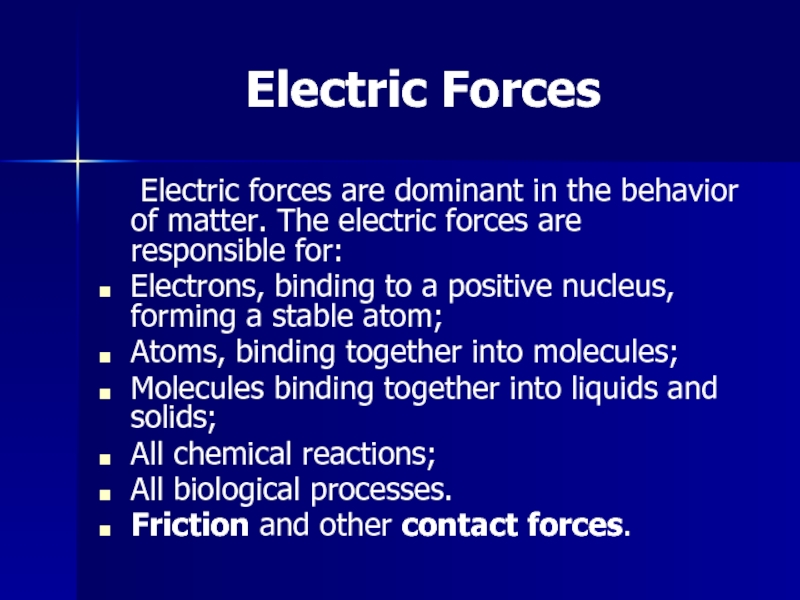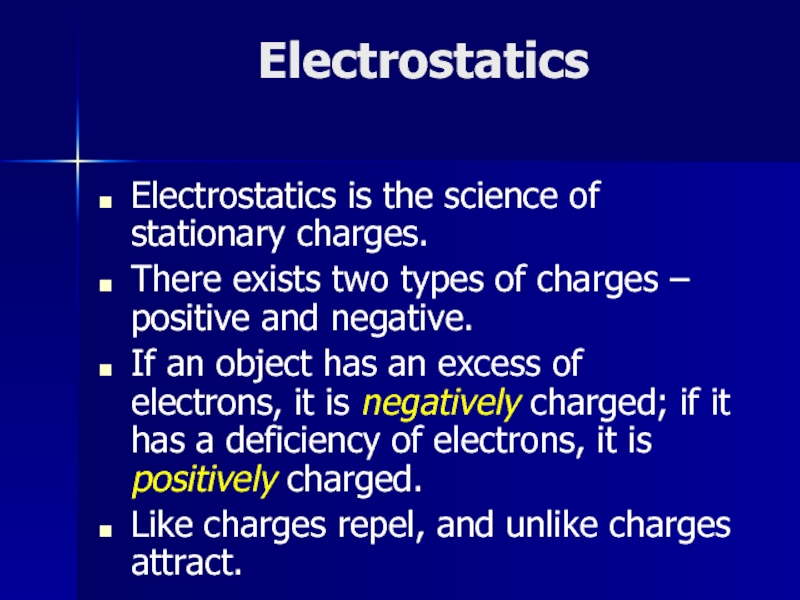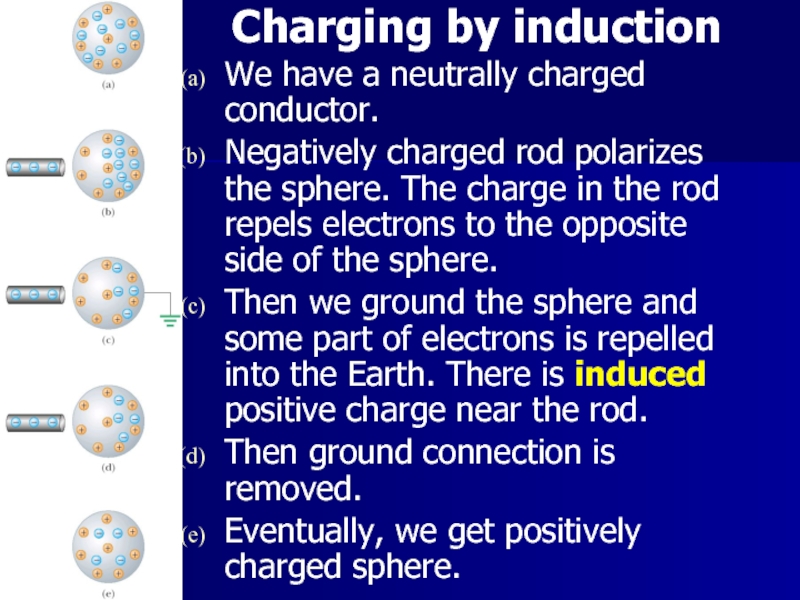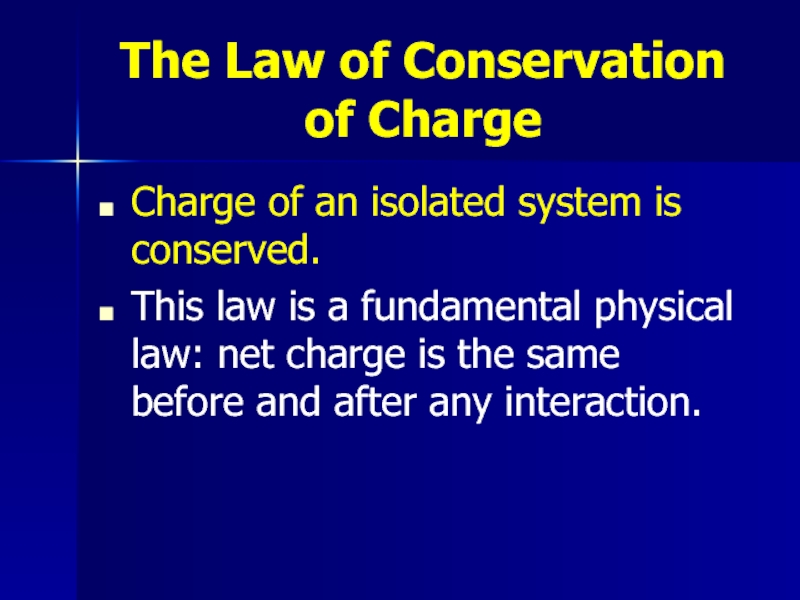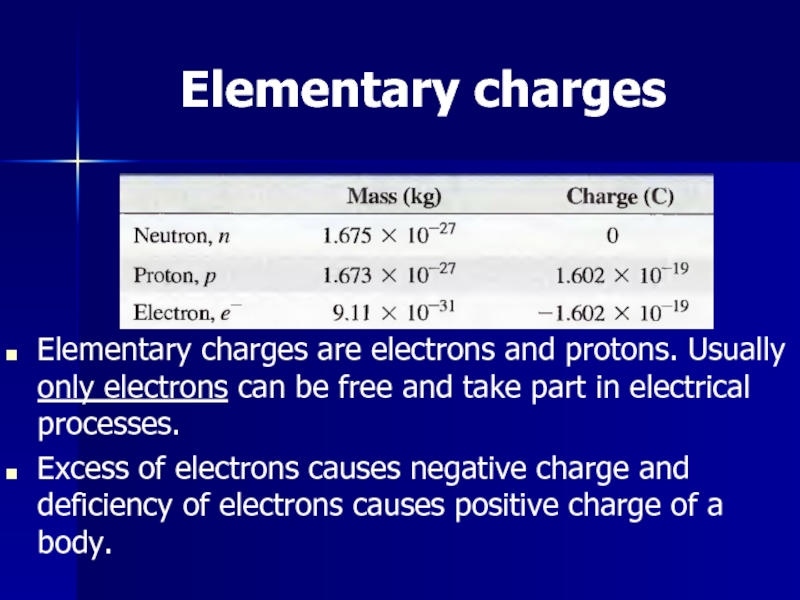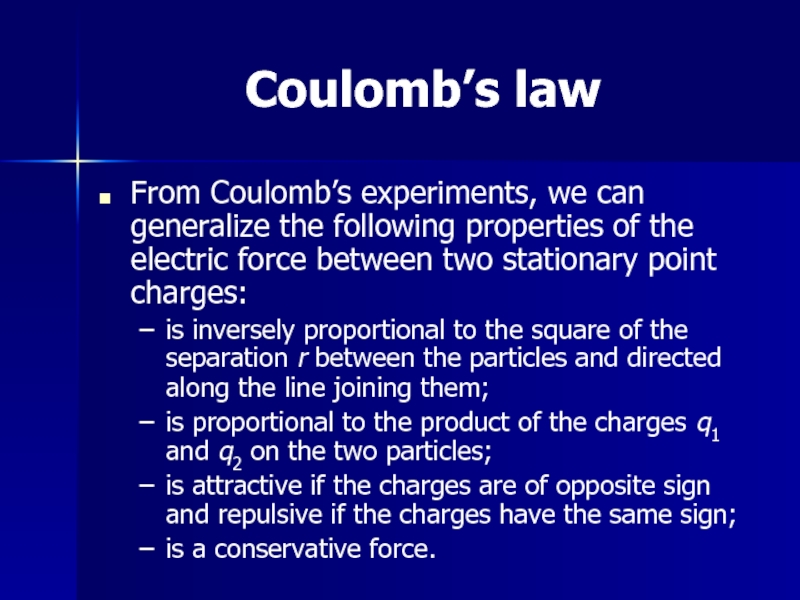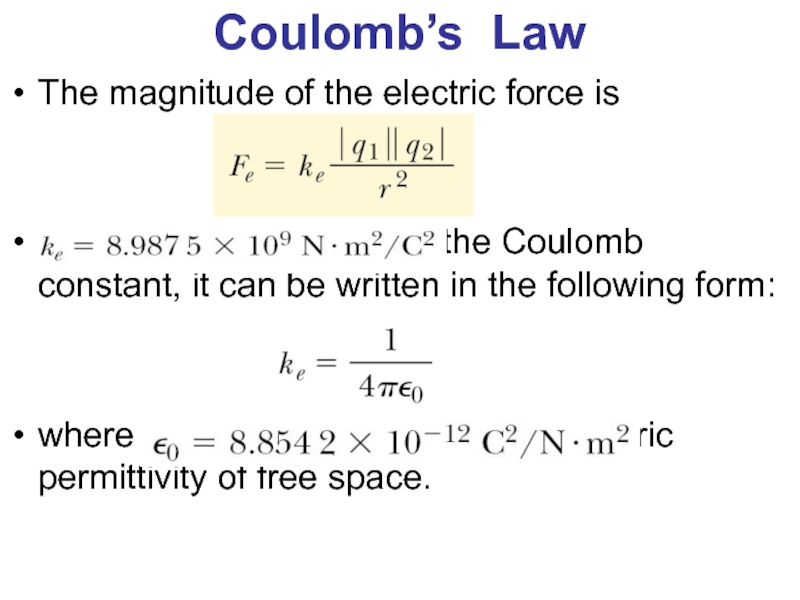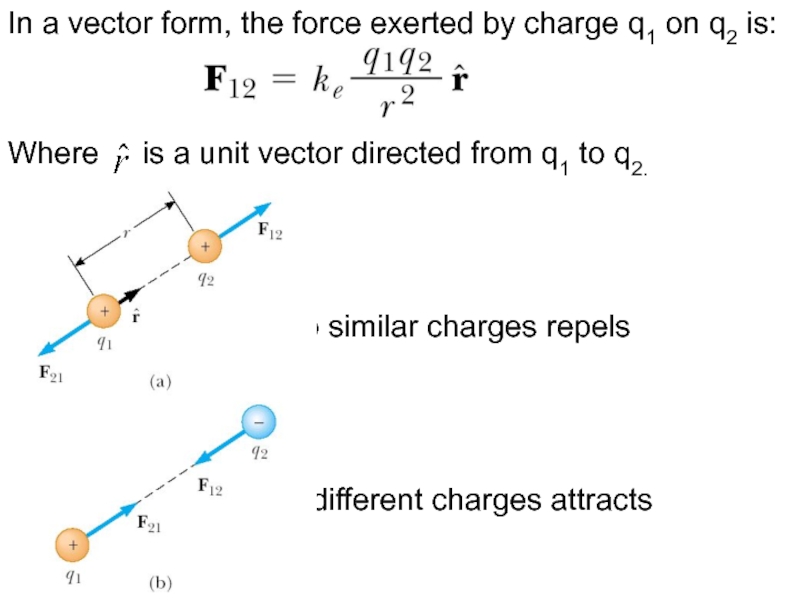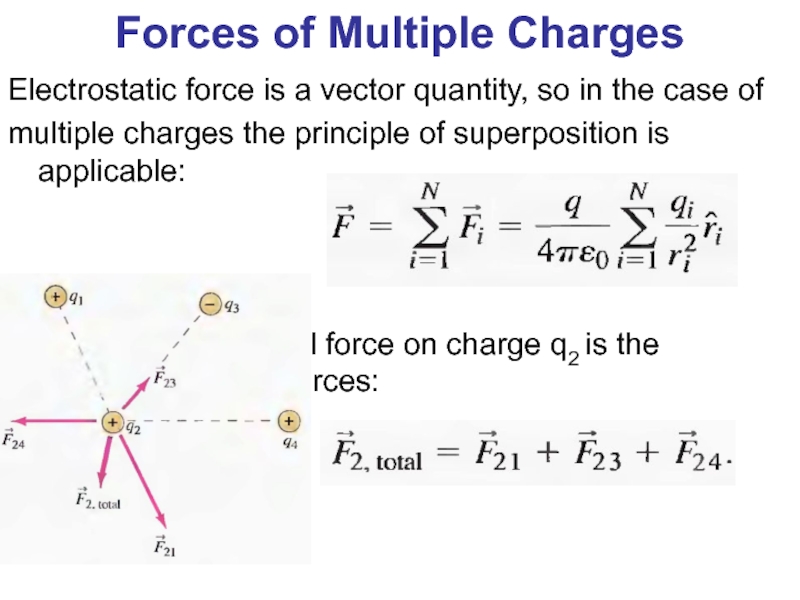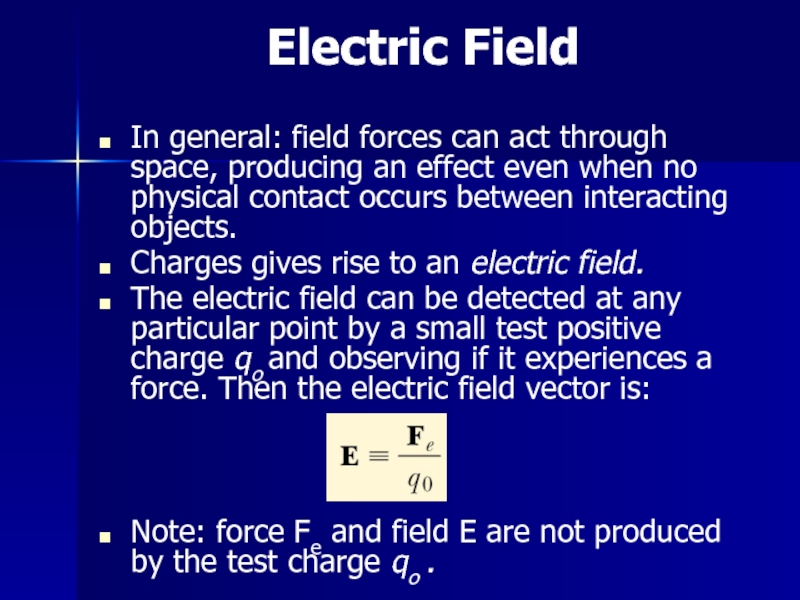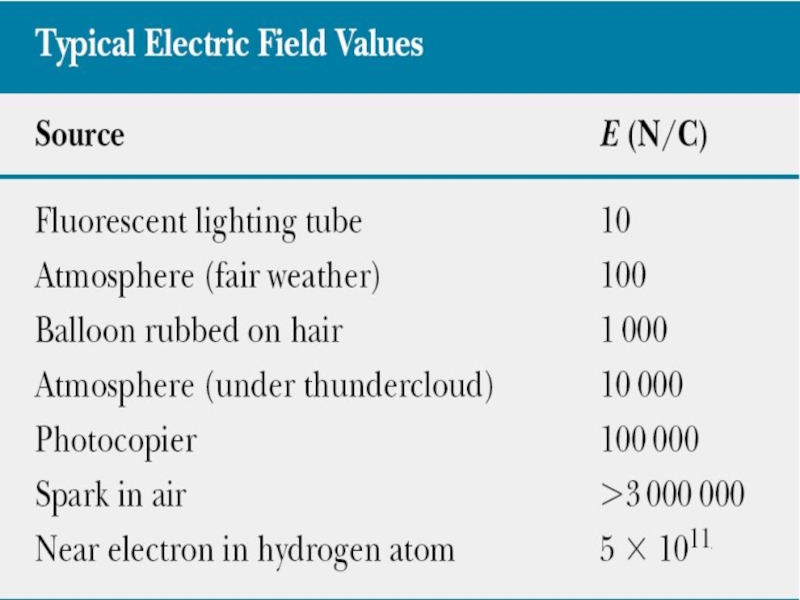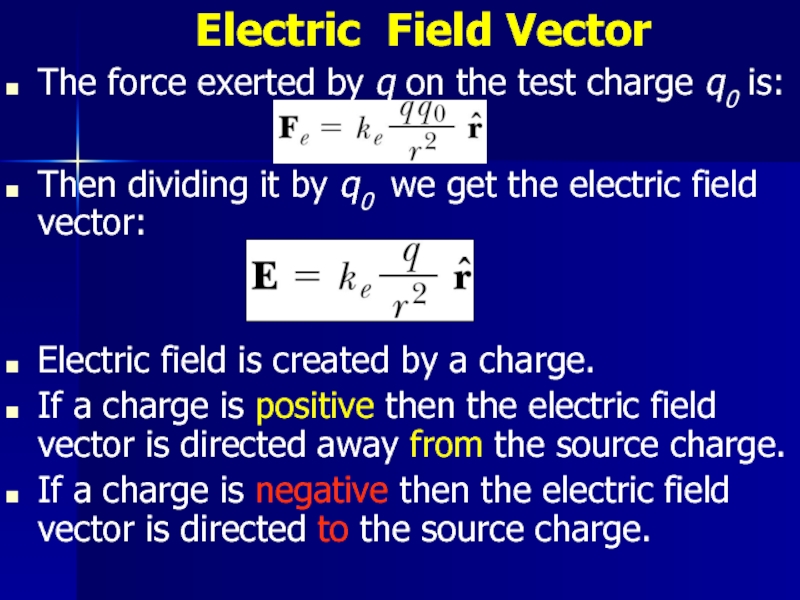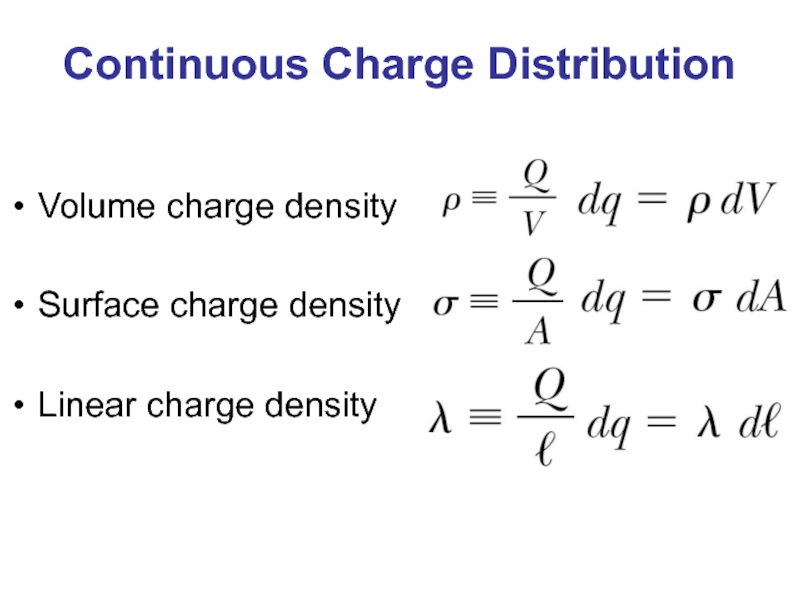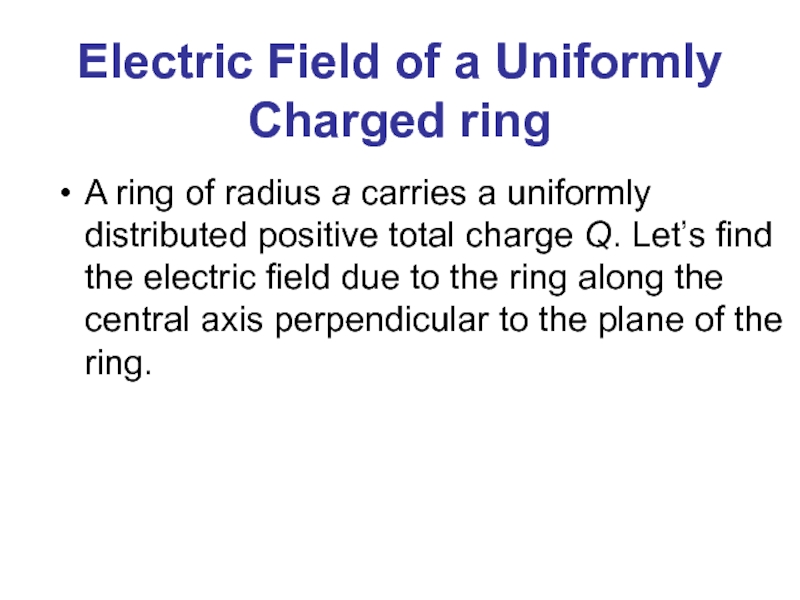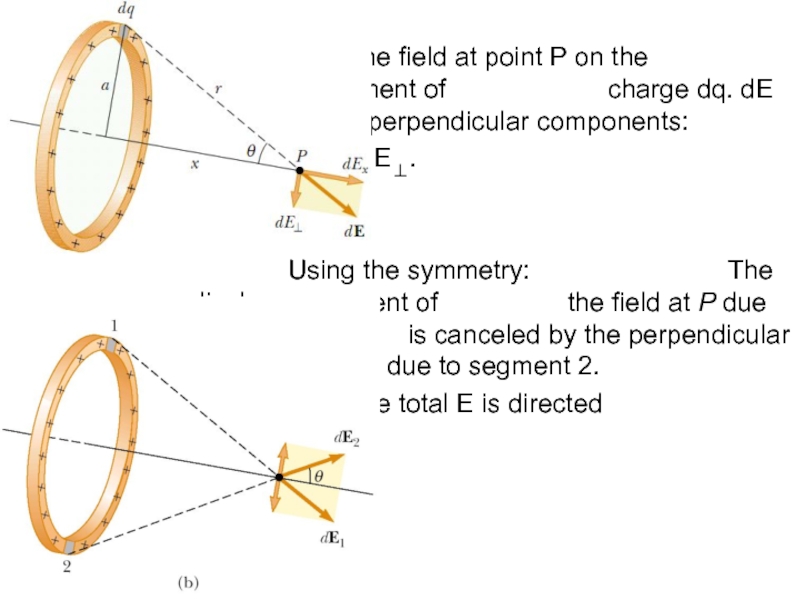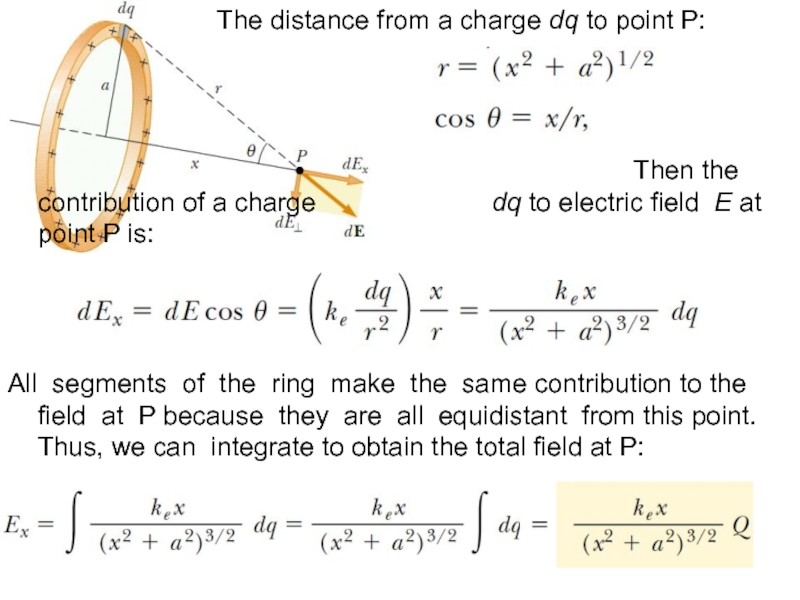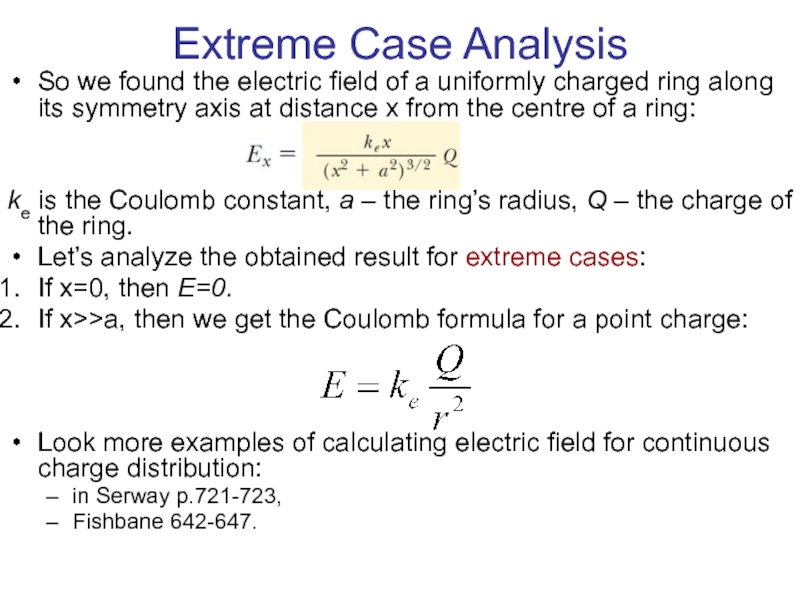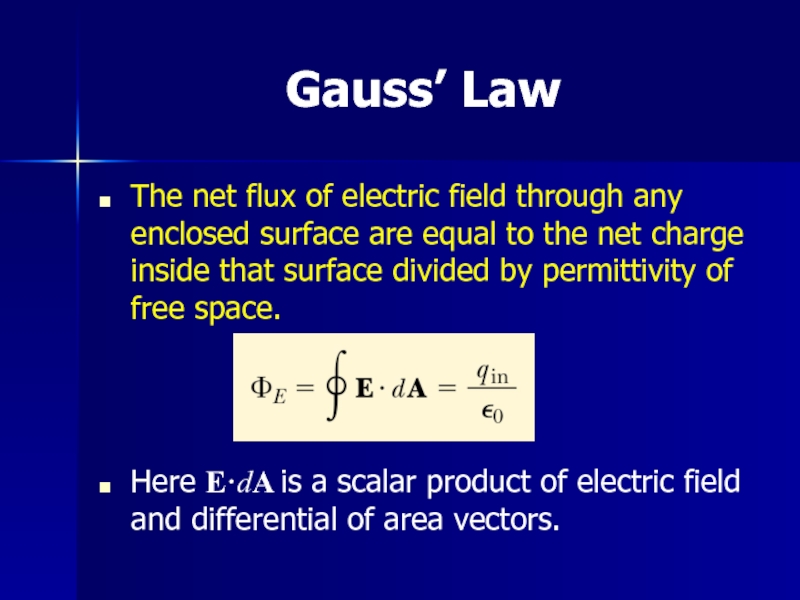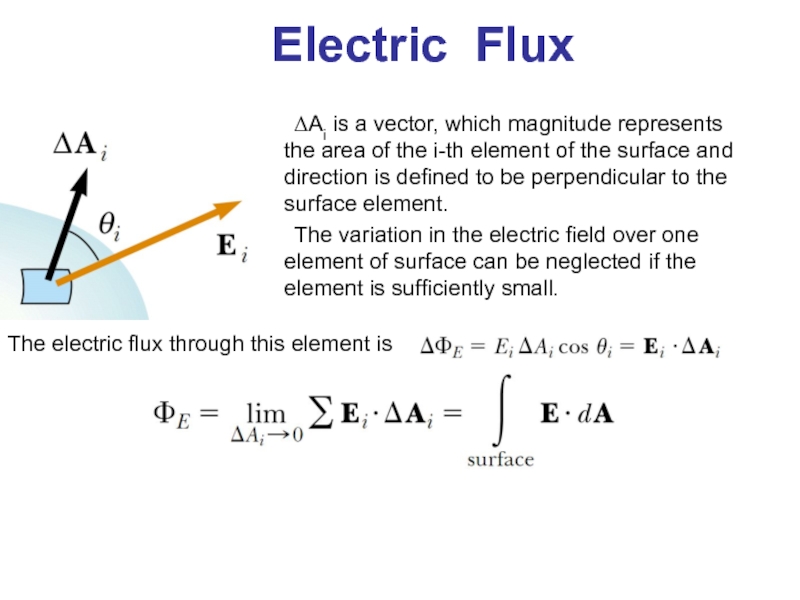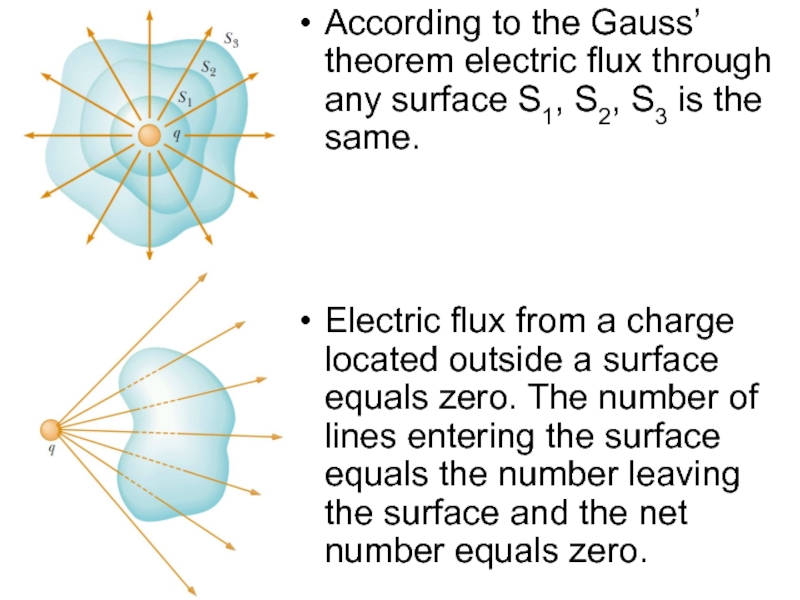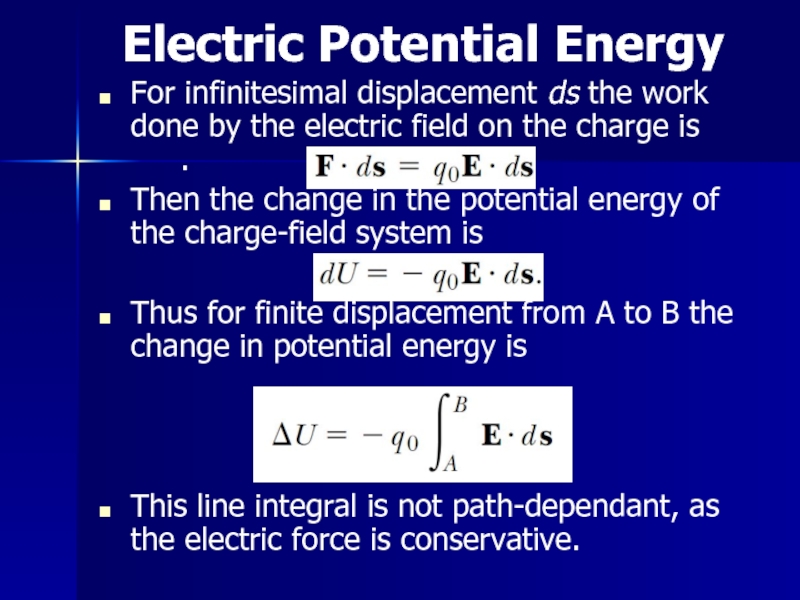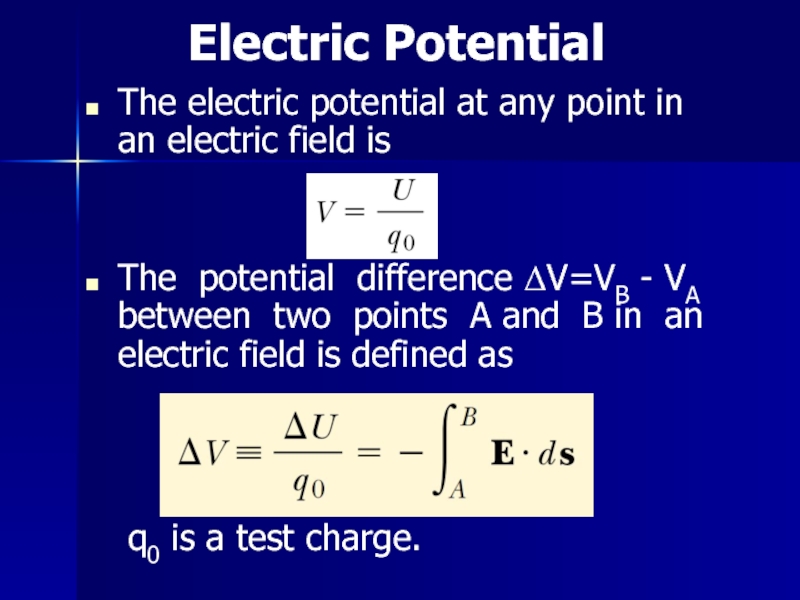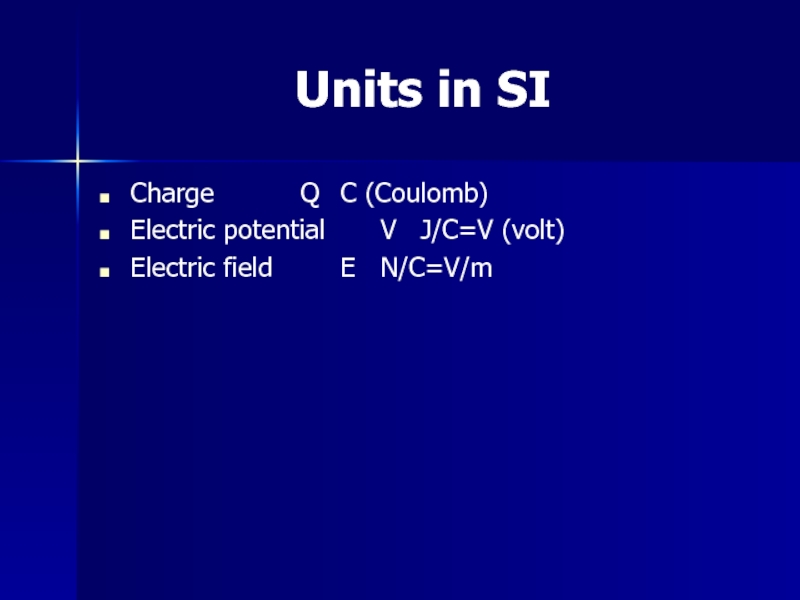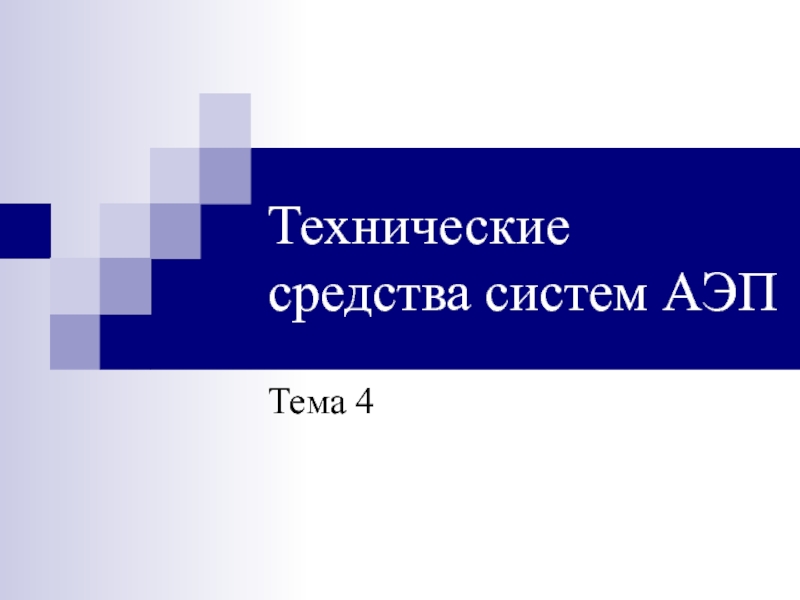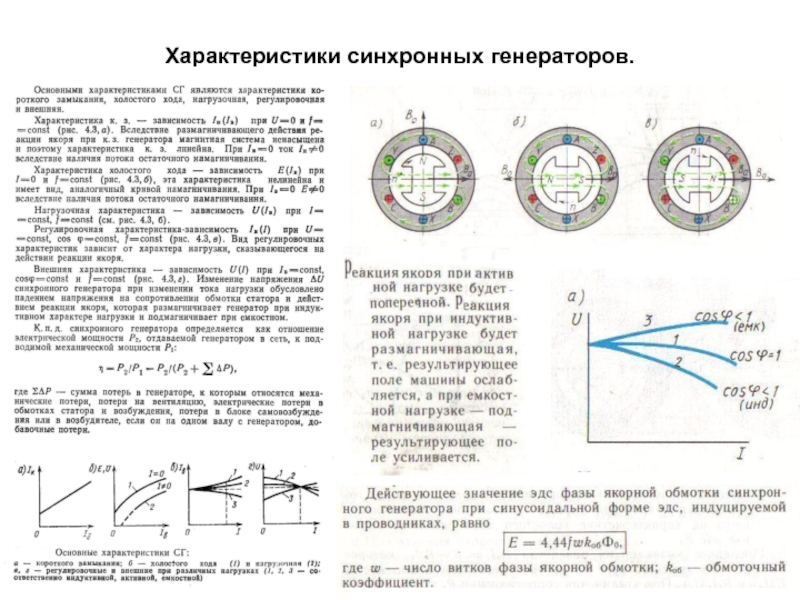- Главная
- Разное
- Дизайн
- Бизнес и предпринимательство
- Аналитика
- Образование
- Развлечения
- Красота и здоровье
- Финансы
- Государство
- Путешествия
- Спорт
- Недвижимость
- Армия
- Графика
- Культурология
- Еда и кулинария
- Лингвистика
- Английский язык
- Астрономия
- Алгебра
- Биология
- География
- Детские презентации
- Информатика
- История
- Литература
- Маркетинг
- Математика
- Медицина
- Менеджмент
- Музыка
- МХК
- Немецкий язык
- ОБЖ
- Обществознание
- Окружающий мир
- Педагогика
- Русский язык
- Технология
- Физика
- Философия
- Химия
- Шаблоны, картинки для презентаций
- Экология
- Экономика
- Юриспруденция
Electric Forces презентация
Содержание
- 1. Electric Forces
- 2. Lecture 8 Electrostatics Electric charge. Coulomb’s law. Electric field. Gauss’ law. Electric potential.
- 3. Electric Forces Electric forces are dominant in
- 4. Electrostatics Electrostatics is the science of
- 5. Charging by induction We have a neutrally
- 6. The Law of Conservation of Charge Charge
- 7. Elementary charges Elementary charges are electrons and
- 8. Coulomb’s law From Coulomb’s experiments, we can
- 9. Coulomb’s Law The magnitude of the electric
- 10. In a vector form, the force exerted
- 11. Electrostatic force is a vector quantity, so
- 12. Electric Field In general: field forces can
- 14. Electric Field Vector The force exerted by
- 15. Continuous Charge Distribution Volume charge density Surface charge density Linear charge density
- 16. Electric Field of a Uniformly Charged ring
- 17. dE is the field at point
- 18. The distance
- 19. Extreme Case Analysis So we found the
- 20. Gauss’ Law The net flux of electric
- 21. Electric Flux ΔAi is a vector, which
- 22. According to the Gauss’ theorem electric flux
- 23. Electric Potential Energy For infinitesimal displacement ds
- 24. Electric Potential The electric potential at any
- 25. Potential Properties
- 26. Units in SI Charge Q C (Coulomb) Electric potential V J/C=V (volt) Electric field E N/C=V/m
Слайд 2Lecture 8
Electrostatics
Electric charge.
Coulomb’s law.
Electric field.
Gauss’ law.
Electric potential.
Слайд 3Electric Forces
Electric forces are dominant in the behavior of matter. The
electric forces are responsible for:
Electrons, binding to a positive nucleus, forming a stable atom;
Atoms, binding together into molecules;
Molecules binding together into liquids and solids;
All chemical reactions;
All biological processes.
Friction and other contact forces.
Electrons, binding to a positive nucleus, forming a stable atom;
Atoms, binding together into molecules;
Molecules binding together into liquids and solids;
All chemical reactions;
All biological processes.
Friction and other contact forces.
Слайд 4Electrostatics
Electrostatics is the science of stationary charges.
There exists two types of
charges – positive and negative.
If an object has an excess of electrons, it is negatively charged; if it has a deficiency of electrons, it is positively charged.
Like charges repel, and unlike charges attract.
If an object has an excess of electrons, it is negatively charged; if it has a deficiency of electrons, it is positively charged.
Like charges repel, and unlike charges attract.
Слайд 5Charging by induction
We have a neutrally charged conductor.
Negatively charged rod polarizes
the sphere. The charge in the rod repels electrons to the opposite side of the sphere.
Then we ground the sphere and some part of electrons is repelled into the Earth. There is induced positive charge near the rod.
Then ground connection is removed.
Eventually, we get positively charged sphere.
Then we ground the sphere and some part of electrons is repelled into the Earth. There is induced positive charge near the rod.
Then ground connection is removed.
Eventually, we get positively charged sphere.
Слайд 6The Law of Conservation of Charge
Charge of an isolated system is
conserved.
This law is a fundamental physical law: net charge is the same before and after any interaction.
This law is a fundamental physical law: net charge is the same before and after any interaction.
Слайд 7Elementary charges
Elementary charges are electrons and protons. Usually only electrons can
be free and take part in electrical processes.
Excess of electrons causes negative charge and deficiency of electrons causes positive charge of a body.
Excess of electrons causes negative charge and deficiency of electrons causes positive charge of a body.
Слайд 8Coulomb’s law
From Coulomb’s experiments, we can generalize the following properties of
the electric force between two stationary point charges:
is inversely proportional to the square of the separation r between the particles and directed along the line joining them;
is proportional to the product of the charges q1 and q2 on the two particles;
is attractive if the charges are of opposite sign and repulsive if the charges have the same sign;
is a conservative force.
is inversely proportional to the square of the separation r between the particles and directed along the line joining them;
is proportional to the product of the charges q1 and q2 on the two particles;
is attractive if the charges are of opposite sign and repulsive if the charges have the same sign;
is a conservative force.
Слайд 9Coulomb’s Law
The magnitude of the electric force is
is the Coulomb constant, it can be written in the following form:
where is the electric permittivity of free space.
where is the electric permittivity of free space.
Слайд 10In a vector form, the force exerted by charge q1 on
q2 is:
Where is a unit vector directed from q1 to q2.
(a) two similar charges repels
(b) two different charges attracts
Where is a unit vector directed from q1 to q2.
(a) two similar charges repels
(b) two different charges attracts
Слайд 11Electrostatic force is a vector quantity, so in the case of
multiple charges the principle of superposition is applicable:
The total force on charge q2 is the vector sum of all forces:
Forces of Multiple Charges
Слайд 12Electric Field
In general: field forces can act through space, producing an
effect even when no physical contact occurs between interacting objects.
Charges gives rise to an electric field.
The electric field can be detected at any particular point by a small test positive charge qo and observing if it experiences a force. Then the electric field vector is:
Note: force Fe and field E are not produced by the test charge qo .
Charges gives rise to an electric field.
The electric field can be detected at any particular point by a small test positive charge qo and observing if it experiences a force. Then the electric field vector is:
Note: force Fe and field E are not produced by the test charge qo .
Слайд 14Electric Field Vector
The force exerted by q on the test charge
q0 is:
Then dividing it by q0 we get the electric field vector:
Electric field is created by a charge.
If a charge is positive then the electric field vector is directed away from the source charge.
If a charge is negative then the electric field vector is directed to the source charge.
Then dividing it by q0 we get the electric field vector:
Electric field is created by a charge.
If a charge is positive then the electric field vector is directed away from the source charge.
If a charge is negative then the electric field vector is directed to the source charge.
Слайд 15Continuous Charge Distribution
Volume charge density
Surface charge density
Linear charge density
Слайд 16Electric Field of a Uniformly Charged ring
A ring of radius a
carries a uniformly distributed positive total charge Q. Let’s find the electric field due to the ring along the central axis perpendicular to the plane of the ring.
Слайд 17
dE is the field at point P on the x axis
due to an element of charge dq. dE has two perpendicular components:
EX and E⊥.
Using the symmetry: The perpendicular component of the field at P due to segment 1 is canceled by the perpendicular component due to segment 2.
Thus the total E is directed along x axis.
EX and E⊥.
Using the symmetry: The perpendicular component of the field at P due to segment 1 is canceled by the perpendicular component due to segment 2.
Thus the total E is directed along x axis.
Слайд 18
The distance from a charge dq to
point P:
Then the contribution of a charge dq to electric field E at point P is:
All segments of the ring make the same contribution to the field at P because they are all equidistant from this point. Thus, we can integrate to obtain the total field at P:
Then the contribution of a charge dq to electric field E at point P is:
All segments of the ring make the same contribution to the field at P because they are all equidistant from this point. Thus, we can integrate to obtain the total field at P:
Слайд 19Extreme Case Analysis
So we found the electric field of a uniformly
charged ring along its symmetry axis at distance x from the centre of a ring:
ke is the Coulomb constant, a – the ring’s radius, Q – the charge of the ring.
Let’s analyze the obtained result for extreme cases:
If x=0, then E=0.
If x>>a, then we get the Coulomb formula for a point charge:
Look more examples of calculating electric field for continuous charge distribution:
in Serway p.721-723,
Fishbane 642-647.
ke is the Coulomb constant, a – the ring’s radius, Q – the charge of the ring.
Let’s analyze the obtained result for extreme cases:
If x=0, then E=0.
If x>>a, then we get the Coulomb formula for a point charge:
Look more examples of calculating electric field for continuous charge distribution:
in Serway p.721-723,
Fishbane 642-647.
Слайд 20Gauss’ Law
The net flux of electric field through any enclosed surface
are equal to the net charge inside that surface divided by permittivity of free space.
Here E·dA is a scalar product of electric field and differential of area vectors.
Here E·dA is a scalar product of electric field and differential of area vectors.
Слайд 21Electric Flux
ΔAi is a vector, which magnitude represents the area of
the i-th element of the surface and direction is defined to be perpendicular to the surface element.
The variation in the electric field over one element of surface can be neglected if the element is sufficiently small.
The variation in the electric field over one element of surface can be neglected if the element is sufficiently small.
The electric flux through this element is
Слайд 22According to the Gauss’ theorem electric flux through any surface S1,
S2, S3 is the same.
Electric flux from a charge located outside a surface equals zero. The number of lines entering the surface equals the number leaving the surface and the net number equals zero.
Electric flux from a charge located outside a surface equals zero. The number of lines entering the surface equals the number leaving the surface and the net number equals zero.
Слайд 23Electric Potential Energy
For infinitesimal displacement ds the work done by the
electric field on the charge is .
Then the change in the potential energy of the charge-field system is
Thus for finite displacement from A to B the change in potential energy is
This line integral is not path-dependant, as the electric force is conservative.
Then the change in the potential energy of the charge-field system is
Thus for finite displacement from A to B the change in potential energy is
This line integral is not path-dependant, as the electric force is conservative.
Слайд 24Electric Potential
The electric potential at any point in an electric field
is
The potential difference ΔV=VB - VA between two points A and B in an electric field is defined as
q0 is a test charge.
The potential difference ΔV=VB - VA between two points A and B in an electric field is defined as
q0 is a test charge.
